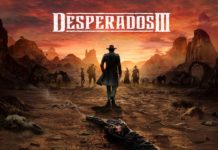The rapid penetration of the digital technologies and internet in industries are booming these days. Several prominent technology companies are spearheading the widespread adoption of cutting-edge technologies across various industry sectors, such as automotive, healthcare, retail, finance, and manufacturing. Generative AI is one of those technology, has evolved over several decades, with significant contributions from researchers and scientists. In this article, we will explore the Generative AI Models
What is Generative AI?
Generative AI is a type of artificial intelligence technology or branch of artificial intelligence that focuses on creating or generating new content using machine learning techniques. This can generate new content, including audio, code, images, text, simulations, videos, code or synthetic data.
In a nutshell, Any AI model, tool, application is generating something on its own, can be referred as “generative AI.”
In addition to this, Generative AI models learn patterns and structures from existing data and then generate new outputs that resemble the original data. ChatGPT, DALL-E, and Bard are examples of generative AI applications that produce content like text or images based on user-given prompts or dialogue.
How Generative AI works ?
Generative AI uses a variety of techniques and array of methodologies to produce content based on prompts. It includes neural networks, deep learning algorithms, transformers, generative adversarial networks (GANs), and variational auto-encoders to detect patterns and generate novel outcomes from them.
So, without further delay, let us explore these generative AI Models:
Top Generative AI Models |
|
1. GPT-4 by OpenAI
GPT-4 is most recent version of OpenAI’s Large Language Model (LLM) and advanced system, producing safer and more useful responses. This Generative AI Model is one of the latest language model, with robust problem solving abilities, and solve difficult problems with greater accuracy.
Key features:
- Enhanced Language Understanding
- Expanded Context Window
- Fine-Grained Control
- Few-Shot or Zero-Shot Learning
- Ethical and Safety Considerations
2. GitHub Copilot by Microsoft
GitHub Copilot is an AI-powered platform that utilizes the capabilities of OpenAI Codex to provide real-time code suggestions and even entire functions, seamlessly integrated into your editor. Its primary objective is to assist developers by offering contextual code suggestions and autocompletions directly within their integrated development environments (IDEs).
Key features:
- Intelligent Code Completion
- Multilingual Support
- Contextual Code Generation
- IDE Integration
- Code Snippet Expansion
- Continuous Learning and Improvement
3. AlphaCode by DeepMind
AlphaCode is a transformer-based language model that surpasses the complexity of numerous existing language models, such as OpenAI Codex, boasting an impressive 41.4 billion parameters. This is also known for one of the leading problem-solving and coding solution in the realm of generative AI
AlphaCode offers training capabilities across a wide range of programming languages, including C#, Ruby, Scala, Java, JavaScript, PHP, Go, and Rust. Notably, it excels in Python and C++, delivering exceptional performance and accuracy in these specific languages.
Key features:
- Efficient filtering methods following extensive code generation.
- Language model built on the transformer architecture.
- Comprehensive collection of datasets and solutions accessible on GitHub.
- Programming expertise encompassing Python, C++, and various other languages.
- Access to a diverse range of approximately 13,000 example tasks for training purposes.
4. ChatGPT
From the recent releases and the previous Generative AI Models ChatGPT represents a significant advancement in natural language processing. ChatGPT built on top of OpenAI’s foundational large language models (LLMs) like GPT-4 and its predecessors.
It is based on the GPT (Generative Pre-trained Transformer) architecture, specifically GPT-3.5. ChatGPT is designed to engage in interactive conversations and provide coherent and contextually relevant responses.
Key features:
- Language Understanding and Generation:
- Natural Language Processing
- Adaptability
- Large Knowledge Base
- Multi-turn Conversations
- User Interaction and Feedback
5. BARD by Google
BARD, is the advanced version of AI Dungeon and has the immense capabilities of GPT-3 to generate detailed descriptions, engage in conversational dialogue, and create imaginative worlds.
Key Features
- Built on Language Model for Dialogue Applications (LaMDA), a transformer-based model.
- User-based response rating system.
- Accessible via personal Google accounts.
- Currently available to limited US and UK users through a waitlist.
- Capable of supporting programming and software development tasks.
6. DALL-E
DALL-E is an another Generative AI Models developed by OpenAI that focuses on generating unique and realistic images from text prompts. DALL-E was the first AI-powered system to bring the possibilities of text-to-visual functionality.
The name “DALL-E” is a combination of the artist Salvador Dalí and the Pixar character Wall-E, representing both surreal creativity and the ability to bring imaginations to life.
- Text-to-Image Synthesis
- Novel Image Generation
- Creative Interpretation
- High Level of Detail
- Imaginative Concepts
- Large-Scale Training
- Transfer Learning
7. Cohere Generate by Cohere
Cohere is an AI company that claims to produces unique content for emails, landing pages, product descriptions, and more. This will help businees to grow with easy access to any type of content and can improve their operations by harnessing the power of AI.
Key Features
- Generate copy for any content
- Creates Ad and blog copy.
- Writes Product description.
Good Luck! 
















































